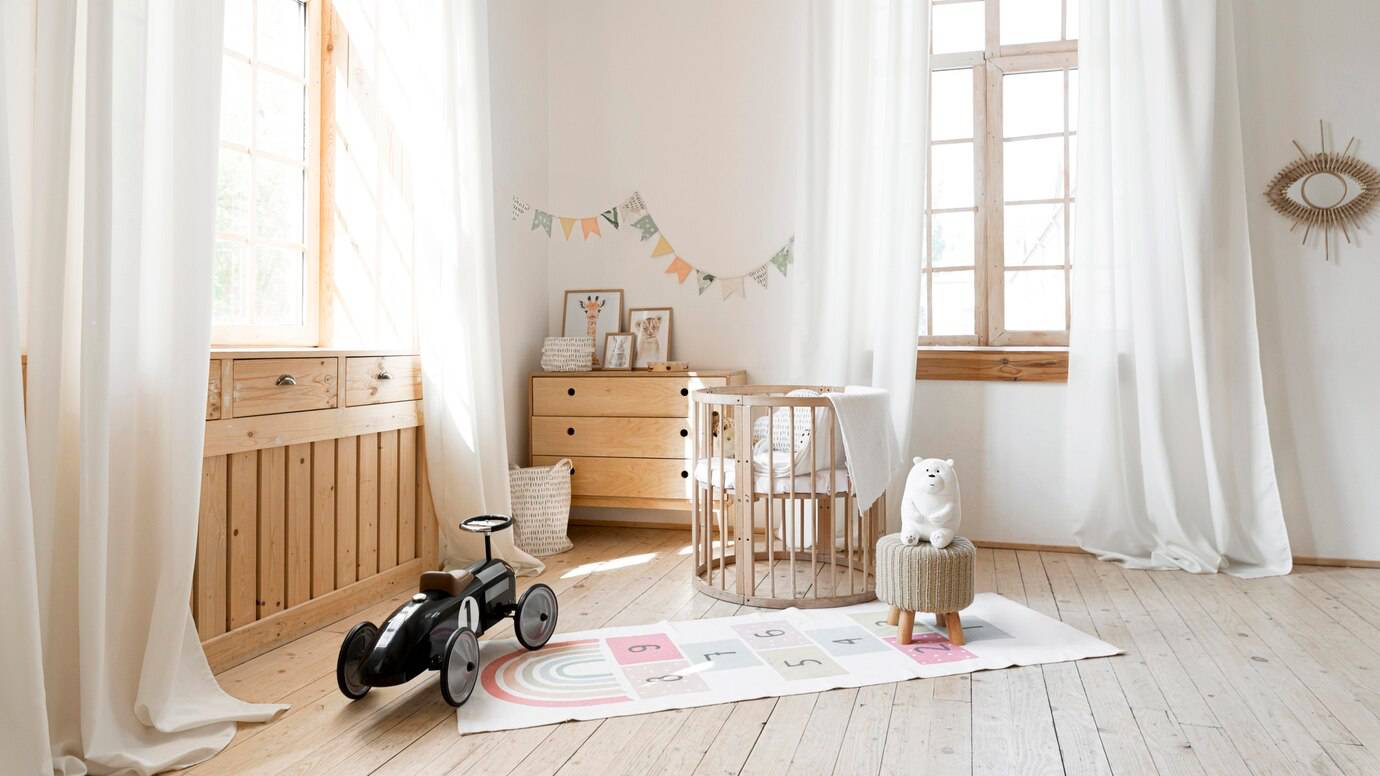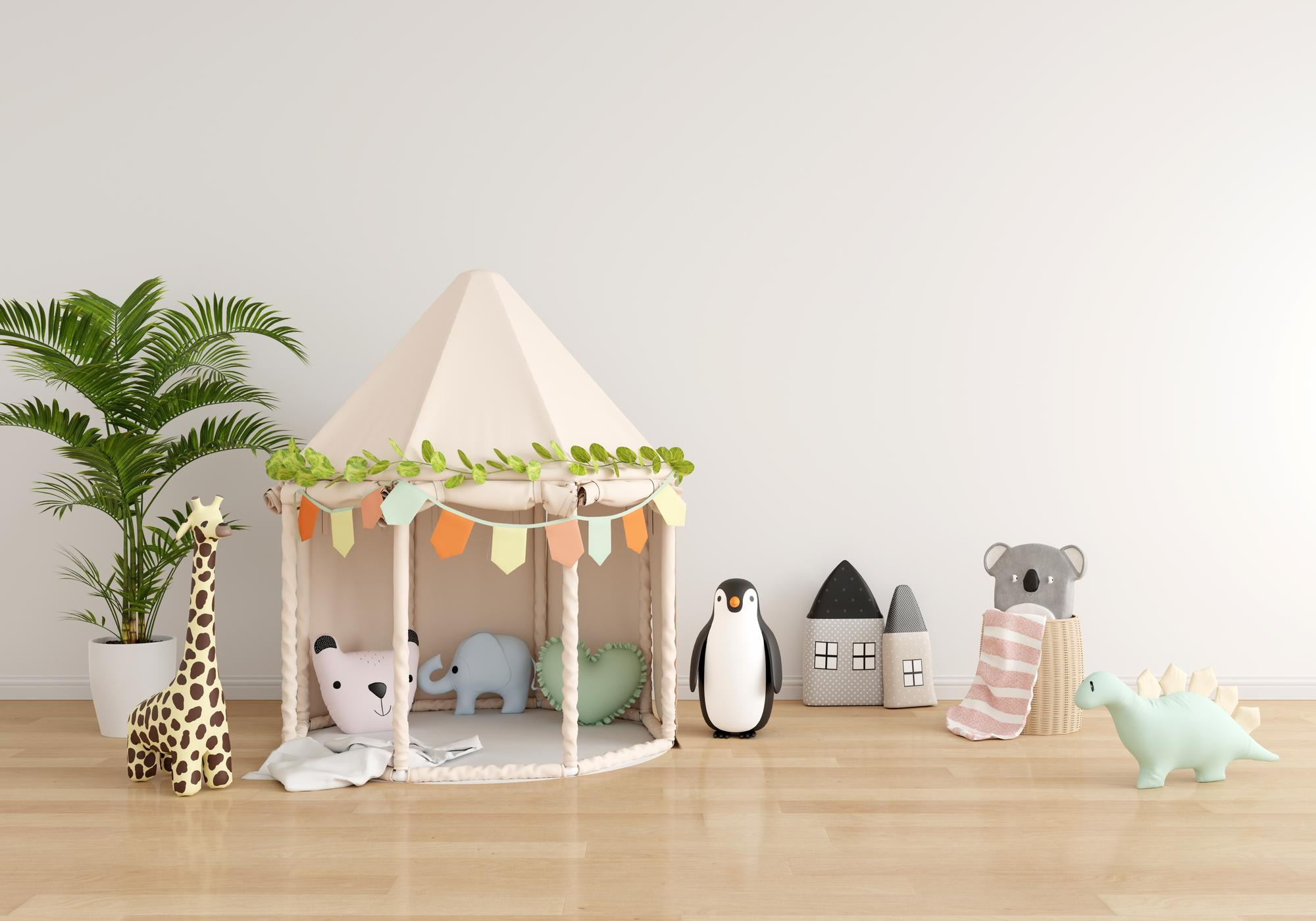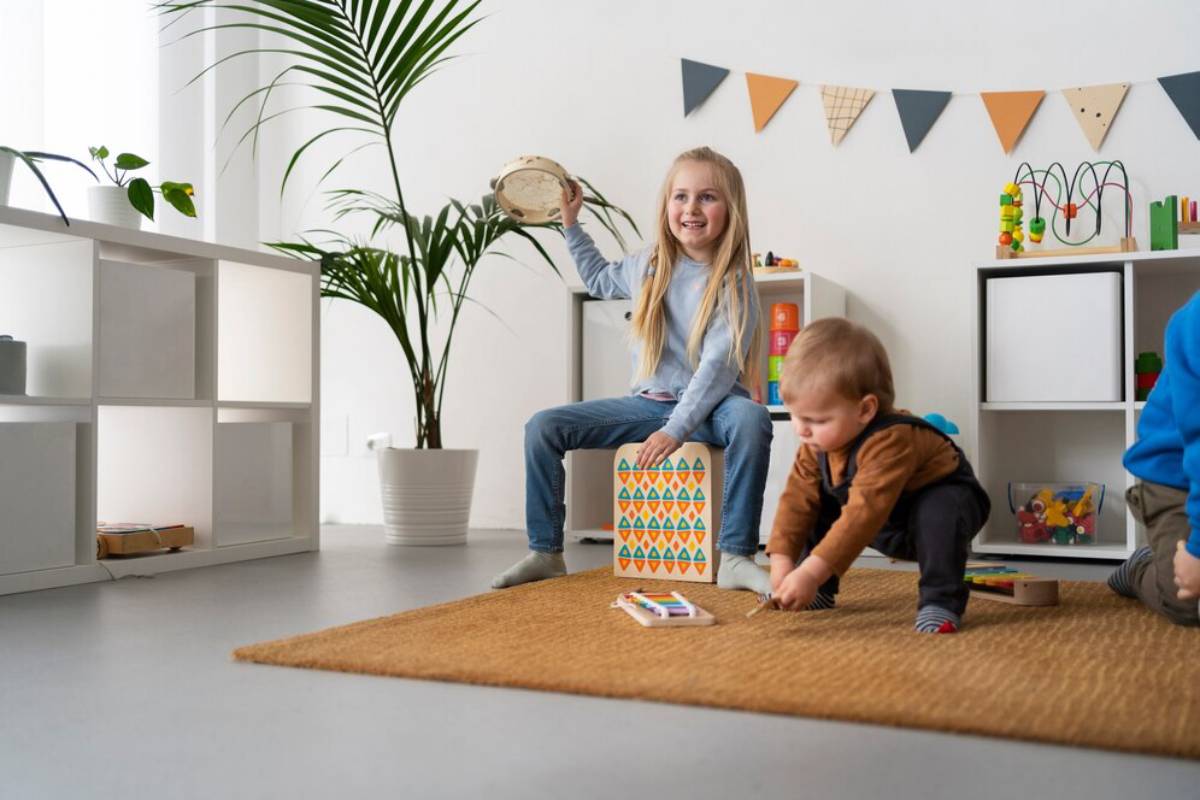
Fun Meets Function: Scandinavian Play Areas
Walk into most kids’ playrooms and what do you find? Piles of plastic, mismatched toy boxes, forgotten puzzles, and that one missing Lego piece you always seem to step on barefoot. Sound familiar? Now imagine a space where fun meets function — a room that invites creativity, encourages independence, and still feels like a peaceful part of your home. That’s the magic of functional Scandinavian design applied to a kids play area.
In this guide, we’ll explore how to build a Nordic-inspired play space that’s organised, adaptable, and child-friendly. Whether you’re working with a dedicated playroom, a bedroom corner, or even a shared family living area, these playroom ideas will help you create a balanced environment where kids can thrive without the clutter taking over.
Let’s dive into how you can create a playful haven that embodies the Scandinavian design principles of simplicity, utility, and beauty — with a touch of childlike wonder.
Why Choose Scandinavian Design for a Kids Play Area?
When it comes to children’s spaces, Scandinavians just get it. Their approach is rooted in practicality and warmth, with a focus on fostering creativity and independence. Here’s why it works so well for play areas:
Key Characteristics of Functional Scandinavian Design
- Clean lines and simplicity: Keeps visual noise to a minimum, making it easier to focus and unwind.
- Neutral colour palette: Whites, greys, soft pastels, and natural woods create a soothing, timeless environment.
- Functional layout: Every item has a place and a purpose, reducing clutter and promoting organisation.
- Natural materials: Think wood, wool, and cotton — safe, sustainable, and sensory-friendly for little ones.
Scandi design doesn’t mean stripping away personality — it’s about choosing intentionally so that even the most playful elements serve a purpose.
1. Design the Layout with Purpose
Before adding cute storage bins and Pinterest-worthy shelves, take a step back and look at your space. How is it used? What are your child’s favourite activities? Scandinavian design is all about thoughtful zoning.
Create Activity-Based Zones
Break the playroom or space into functional areas:
- Creative Corner: A small table for crafts and drawing, with shelves or a trolley for supplies.
- Imaginative Play Area: Open floor space for building blocks, dolls, or make-believe play.
- Reading Nook: A cosy spot with floor cushions, a soft rug, and a book display.
- Tidy-Up Station: Hooks, bins, or low shelves where kids can access and put away toys themselves.
Tip: Use rugs, lighting, or furniture placement to subtly define each zone — without needing physical dividers.
2. Embrace Open Storage — the Scandinavian Way
Say goodbye to overstuffed toy chests and hello to accessible, tidy storage that kids can use without help.
Best Storage Ideas for a Nordic-Inspired Playroom
- Open Cube Shelving: Simple, versatile, and modular. Add fabric or rattan bins to keep the look clean.
- Wall Hooks and Peg Rails: Hang dress-up clothes, baskets of toys, or art projects.
- Lidded Baskets: Great for stacking and hiding mess — choose natural materials like jute or felt.
- Low-Level Bookshelves: Display front-facing books to invite independent reading.
The secret? Make it easy for kids to see what they have and return it to its place. Scandinavian design empowers children by reducing friction between play and organisation.
3. Keep the Colour Palette Calm, But Playful
You might be tempted to go full rainbow in a kids’ playroom, but Scandi interiors show that you don’t need bright colours to create joy.
Colour Tips for Scandinavian Play Areas
- Base Colours: Stick to white, pale grey, or beige on walls to make the room feel light and spacious.
- Accent Shades: Use soft blush pinks, sage green, mustard yellow, or sky blue for cushions, wall art, or toys.
- Natural Tones: Let raw wood and woven textures bring warmth without chaos.
Too much colour can be overstimulating, especially in a space meant for both play and wind-down. A balanced palette helps keep energy in check while still sparking imagination.
4. Choose Toys and Decor That Align with the Aesthetic
Let’s be honest — not all toys are pretty. But with some intentional curation, you can find items that blend beautifully with your design goals while still keeping your child happy.
Toy Selection and Display Ideas

- Wooden Toys: Sturdy, sustainable, and beautiful. Think stacking blocks, train sets, or puzzles.
- Neutral Soft Toys: Avoid neon colours — go for plush animals in greys, browns, or creams.
- Open-Ended Play Tools: Building kits, magnetic tiles, and pretend kitchens encourage creative use.
- Scandi Wall Art: Minimalist prints, name banners, or decals add personality without clutter.
Encourage a rotation system — keep a few toys out and store the rest in baskets. Swap them every few weeks to keep the excitement alive without overcrowding the space.
5. Keep Furniture Functional and Kid-Sized
One of the main tenets of Scandinavian design is furniture that fits the user. For kids, that means items they can use without assistance.
Must-Have Functional Pieces
- Kid-Sized Table and Chairs: Perfect for crafts, snacks, or puzzles.
- Mini Sofa or Floor Cushions: Create a cosy corner without bulky furniture.
- Adjustable Shelves: Grow with your child and adapt to new hobbies or storage needs.
- Foldable Options: Small space? Choose folding tables or stackable stools to save room when not in use.
Avoid overly themed furniture that won’t age well. Scandinavian-inspired pieces tend to be neutral, versatile, and timeless — ideal for evolving needs.
6. Maximise Natural Light and Soften with Textiles
Scandinavian interiors prioritise natural light — which boosts mood and makes small spaces feel larger. But in a playroom, you’ll want to balance brightness with comfort.
Light and Texture Tips
- Let the Light In: Use sheer curtains or wooden blinds to soften sunlight without blocking it.
- Layer with Textiles: Add a soft rug (wool or cotton), comfy beanbags, and a throw blanket for warmth.
- Create Sensory Comfort: Mix textures — smooth wood, fuzzy blankets, felt baskets — for tactile stimulation.
Avoid heavy drapes or bold prints. A gentle, layered look keeps the space cosy without being overwhelming.
7. Add a Personal Touch — But Keep It Simple
A playroom should reflect your child’s personality — but that doesn’t mean it needs to be packed with personal items. A few meaningful touches go a long way.
Personal Yet Minimal Additions
- Framed Artwork by Your Child: Choose one or two pieces and rotate them over time.
- Name Sign or Wooden Letters: Adds charm without garish colour.
- Family Photos or Travel Keepsakes: Integrate subtly to connect the space with the rest of the home.
- Custom Storage Labels: Picture and word labels help younger children stay organised.
Scandi spaces celebrate individualism in quiet ways — the key is restraint with heart.
Real-Life Inspiration: Elias and the City Flat Playroom
Elias is five years old and lives in a two-bedroom flat in Birmingham with his parents. With no separate playroom, his toys spilled into every corner of the flat — until his mum decided to reimagine a Scandinavian-inspired nook in their living area.
- She added a cube shelf with baskets against one wall, matching their existing décor.
- A mini table and two stools slotted perfectly into an alcove for crafts.
- His dad installed a floating shelf and peg rail for artwork and bags.
- They created a reading corner with fairy lights, a wool rug, and a beanbag — now Elias’s favourite spot.
The room didn’t get bigger, but it feels like it did. And now? Clean-up time isn’t a battle — it’s a habit.
Design That Delights, Organises, and Lasts

A Scandinavian play area isn’t just about aesthetics — it’s about creating a space where your child can play freely and safely, while you enjoy a sense of calm and order. Through smart storage, gentle colours, natural materials, and child-friendly furniture, you can craft a room that encourages growth, creativity, and independence.
Remember: you don’t need to spend a fortune or follow trends to build something beautiful. Start with intention. Choose pieces that work hard and look good. Prioritise joy, function, and flexibility.
So, what part of your playroom could use a Nordic refresh? A new layout? Smarter storage? Share your ideas, questions, or transformations in the comments below — and let’s build spaces where children and design can both flourish.


